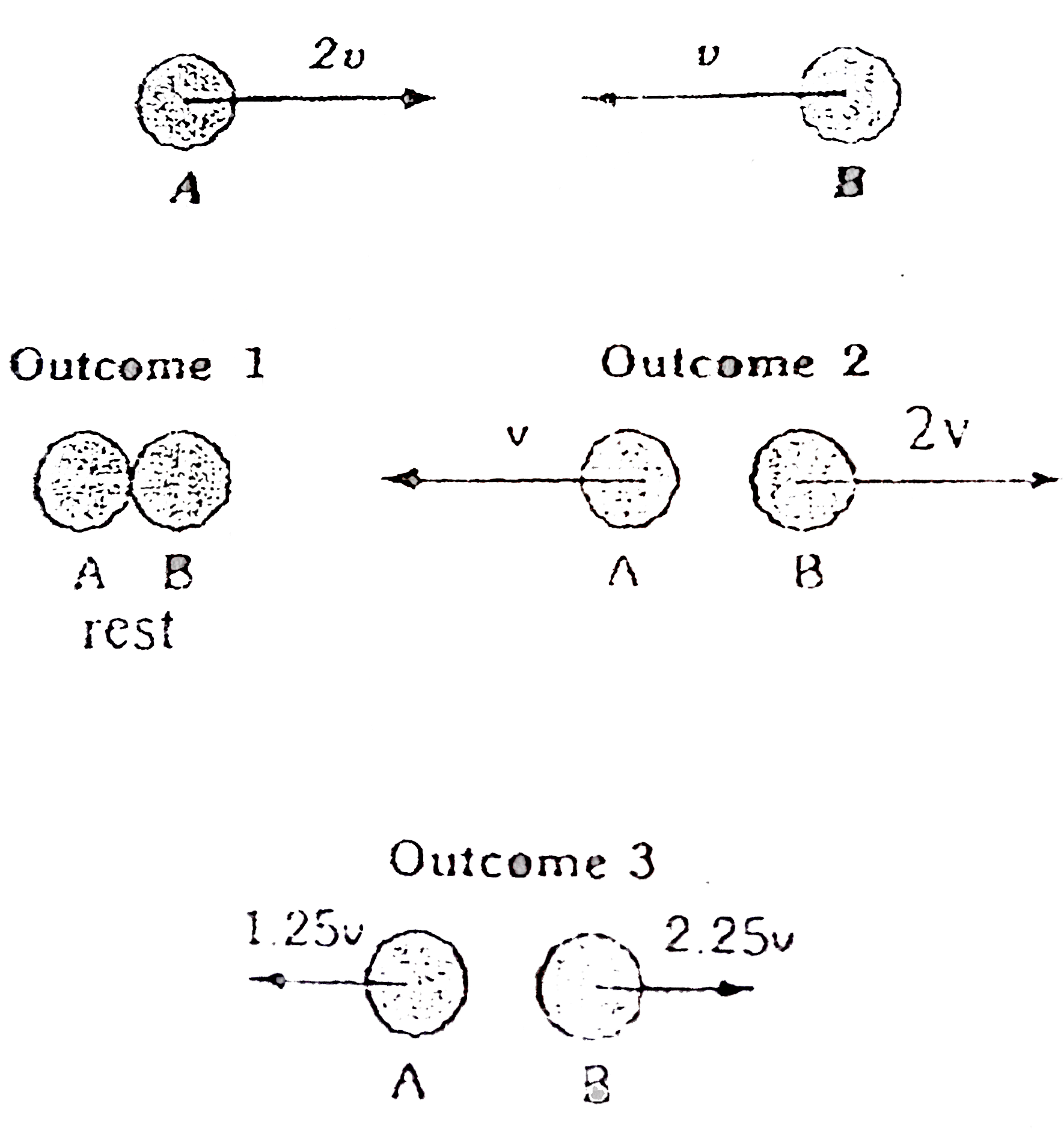Two identical balls moving in opposite directions in free space collide head on. How they will move after the impact, is decided by coefficient of restitution. For different coeffecients of restiution, few possible outcomes are shown in the following figures. Which of the above outcomes are physically possible for a collision?
 Solution in Gujrati
Solution in Gujrati
Only 1
Only 2
1 and 2 but not 3
1 2 and 3 all
The correct Answer is:B
Ans.(2) (Linear momentum should be conserved)
Topper's Solved these Questions
- TEST PAPERBOOK - ALLEN CHAPTER - TEST PAPEREXERCISE - PHYSICS
4 Videos
- TEST PAPERBOOK - ALLEN CHAPTER - TEST PAPEREXERCISE - PHYSICS
4 Videos
- SIMPLE HARMONIC MOTIONBOOK - ALLEN CHAPTER - SIMPLE HARMONIC MOTIONEXERCISE - Example
1 Videos
- TEST PAPER 1BOOK - ALLEN CHAPTER - TEST PAPER 1EXERCISE - PHYSICS
11 Videos
Similar Questions
Choose the correct statement:
View SolutionChoose the correct statement:
View SolutionA rod with rectangular cross section oscillates about a horizontal axis passing through one of its ends and it behaves like a seconds pendulum, its length will be
View SolutionWhy are electric field lines perpendicular at a point on an equipotential surface of a conductor ?
View SolutionTwo ball bearings of mass m each moving in opposite directions with same speed v collide head on with each other. If the collision is perfectly elastic, what will be the outcome of the collision ?
View SolutionA 1 kg ball moving at 12 m//s collides head on with a 2g ball moving in the opposite direction at 24 m//s . The velocity of each ball after the impact, if the coefficient of restitution is 2//3 is
View SolutionA 2kg ball , moving at 10m/s , collides head - on with a 3kg ball moving in the opposite direction at 20m/s. If the coefficient of restitution is 1/3 , then the energy lost in the collision is
View SolutionA ball of mass m moving with a speed 2v0 collides head-on with an identical ball at rest. If e is the coefficient of restitution, then what will be the ratio of velocity of two balls after collision?
View SolutionA 1 kg ball moving with a speed of 6 ms−1 collides head - on with a 0.5 kg ball moving in the opposite direction with a speed of 9 ms−1. If the coefficient of restitution is 13, the energy lost in the collision is
View SolutionA ball P moving with a speed of v ms collides directly with another identical ball Q moving with a speed 10ms' in the opposite direction. P comes to rest after the collision. If the coefficient of restitution is 0.6 the value of v is
View SolutionA 2 kg ball moving at 24 ms undergoes inelastic head on collision with a 4 kg ball moving in the opposite direction at 48 ms. If the coefficient of restitution is 2/3, their velocities in ms-after impact are
View SolutionA ball A moving with a speed of 90 ms' collides directly with another identical ball B moving with a speed v in the opposite direction, A comes to rest after the collision. If the coefficients of restitution is 0.8, the speed of B before collision is
View SolutionA 1kg ball,moving at 12ms−1 collides head-on with a 2kg ball moving in the opposite direction at 24ms−1 .If the coefficient of restitution is 23, then the energy lost in the collision is:
View Solution2kg ball moving at 6ms^(-1) collides head on with a 3kg ball moving in the opposite direction at 12m/s .The velocity of each ball after the impact, if the coefficient of restitution is 1/2, is ?
View SolutionA 1kg ball moving at 12ms−1 collides head on with a 2kg ball moving in the opposite direction at 24 m/s. The velocity of each ball after the impact, if the coefficient of restitution is 2/3, is
View SolutionA 1kg ball moving at 12 ms^(-1) collides head on with a 2kg ball moving in the opposite direction at 24 m/s. The velocity of each ball after the impact, if the coefficient of restitution is 2/3, is
View Solution
